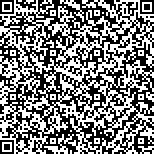下载中心
优秀审稿专家
优秀论文
相关链接
摘要

曲线合成孔径雷达(Curvilinear Synthetic Aperture Radar,简称曲线SAR)是一种新的三维成像模式,通过让载机作曲线飞行,曲线SAR系统能同时在方位维和高度维形成大的合成孔径。本文提出一种曲线SAR的三维目标特征提取和自聚焦新方法。新方法是建立在一种灵活的接收数据模型之上的参数化的新方法。仿真实验证明了所提方法的有效性。
By transmitting signals with large bandwidth and utilizing the relative motion between the radar and the objects to be imaged, synthetic aperture radar(SAR) can produce high-resolution images of targets or scenes of interest. Now, SAR imaging technology has been widely used in many military and civilian applications, such as battlefield awareness, environment monitoring,and city planning. Today, over thirty SAR systems have been put into operation and more are being built around the world. However,most of them can only produce two-dimensional(2-D)SAR images. In practice, 3-D SAR images and 3-D target feature extraction are needed for many applications. The 3-D features of a target scatterer include the radar cross-section (RCS) ,the 2-D location (range and cross-range) and the height(the third dimensional parameter)of the scatterer.Very few papers have discussed the 3-D target feature extraction problem. A popular approach to extract the 3-D target features is interferometric SAR(IFSAR) , which uses a pair of vertically displaced antennas to obtain coherent and parallel measurement apertures. IFSAR can be used to measure the height but has no resolution capability along the height dimension since it only provides two vertical parallel apertures. Hence IFSAR is only a 2.5-D imaging system. Moreover, in IFSAR, the height measurement involves the troublesome phase unwrapping procedure. Recently, Knaell proposed a new idea for the extraction of 3-D target features, which is based on curvilinear SAR(CLSAR) . Unlike the conventional SAR or IFSAR, whose flight trajectory is a straight line, the flight path of a CLSAR system is curve-shaped. CLSAR can be used to form synthetic apertures both in the azimuth and in the height dimensions. Hence CLSAR has resolution capability in the height dimension and the height ambiguity problem encountered in IFSAR is avoided.There are two challenging issues associated with CLSAR. First, the flight path of CLSAR cannot be controlled or measured accurately and the autofocus task here is more complicated than the conventional SAR systems. Second, the aperture of a CLSAR is like a sparse array. The spread function of a point scatterer has high sidelobes and hence the images obtained with conventional Fourier analysis have artifacts. We must carefully devise the feature extraction algorithm so that meaningful features can be extracted.Recently,Wu et al . have proposed a unified robust autofocus algorithm for the conventional 2-D SAR and ISAR imaging. In this paper,we have successfully extended them to the simultaneous autofocus and 3-D target feature extraction via CLSAR. The new algorithm is a parametric approach but is based on a flexible data model and a robust parameter estimation algorithm. The aucofocus is achieved by enhancing the focusing of the dominant scatterers of the target. The advantages of the new algorithm over existing autofocus algorithms include: 1) selecting the dominant scatterers of a target automatically in the 3-D image domain, 2) eliminating the necessary condition of a target containing well isolated or very dominant scatterers, 3) combining the phase and radar cross section information from the selected scatterers optimally by minimizing a nonlinear least squares cost function, and 4) avoiding the burdensome phase unwrapping step, The new approach can be used to significantly improve the estimation accuracy of the target features. Numerical examples are provided to illustrate the performance of the proposed algorithm.

